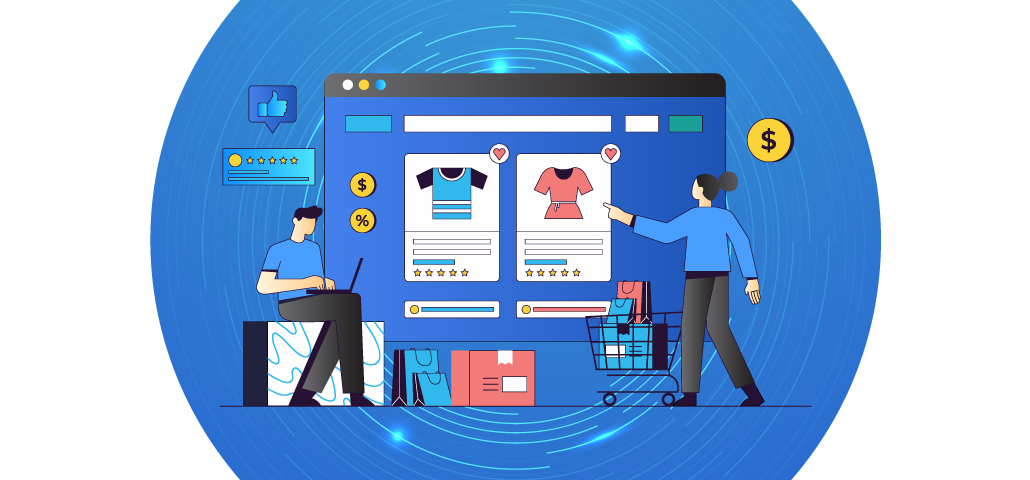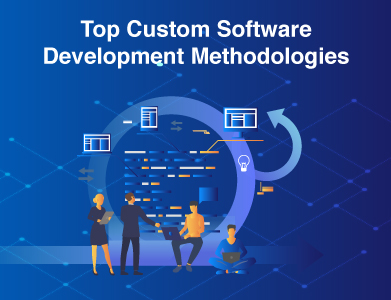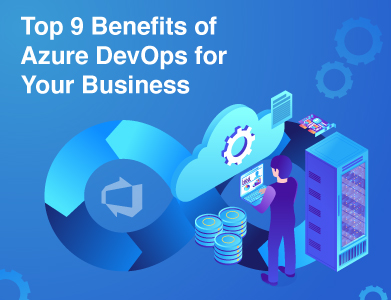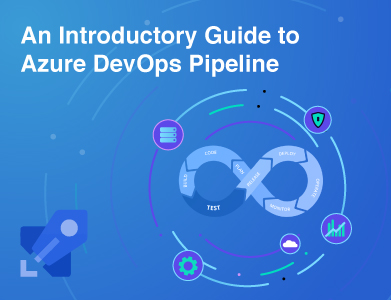Expertise
In the age of startups where every other person has an online business, how would you differentiate your ecommerce business amongst the crowd? Custom eCommerce solution is essential for SMEs and enterprise-level businesses aiming to provide a personalized customer experience while scaling efficiently. Off-the-shelf platforms like Shopify or WooCommerce may be easy to implement, but they often lack the flexibility needed for businesses looking to grow or differentiate in the marketplace.
A custom solution for ecommerce website development provides the infrastructure to build a unique, scalable platform tailored to your needs. So, how much does it cost? Let’s dive in.
What is a Custom eCommerce Software Solution?
A custom eCommerce software solution is a platform built specifically for your business's unique needs. Unlike pre-built platforms like Shopify or WooCommerce, custom solutions allow you to tailor every aspect of the site—from the shopping experience to backend integrations—with no limitations. These platforms are designed to scale as your business grows, offering you greater control and flexibility.
The Real Benefits of Custom eCommerce Solutions for Businesses
Custom eCommerce solutions bring numerous business-focused advantages that differentiate them from generic alternatives. These benefits go beyond aesthetics, directly impacting business operations and profitability:
Tailored Experiences for Higher Conversions
A custom-built platform allows businesses to optimize user experience (UX) and streamline the checkout process. By tailoring every touchpoint to fit your specific customer base, you can enhance conversions and reduce cart abandonment rates. Personalized product suggestions, intuitive navigation, and a seamless checkout process ensure that customers complete purchases.
Scalable Infrastructure for Business Growth
For fast-growing companies, scalability is key. A custom solution can grow with your business, whether you're expanding your product catalog, scaling up for higher traffic, or entering new markets. Off-the-shelf solutions can hit performance bottlenecks as your operations expand, while custom platforms provide a flexible infrastructure that adapts to your growth.
AI-Powered Personalization for Customer Retention
Today’s eCommerce platforms leverage artificial intelligence (AI) to offer personalized shopping experiences. AI algorithms analyze customer behavior to suggest relevant products, improving cross-sell and upsell opportunities. By implementing AI-powered tools such as chatbots and predictive analytics, custom platforms offer advanced personalization that can drastically boost customer loyalty and retention.
Operational Efficiency and Cost Reduction
Custom eCommerce solutions integrate seamlessly with existing enterprise systems, like CRMs, ERPs, and third-party logistics providers, to automate processes such as order fulfillment, inventory management, and customer support. This eliminates inefficiencies, reduces manual work, and minimizes errors, saving time and cutting costs in the long run.
Advanced Security and Compliance
Data privacy regulations like GDPR in the EU or the California Consumer Privacy Act (CCPA) require strict data handling protocols. Custom platforms can be built with these regulations in mind, ensuring compliance and protecting sensitive customer data. Enhanced security features like two-factor authentication, encrypted payments, and fraud prevention tools give businesses and customers peace of mind.
Cost-Effective in the Long Run
While custom solutions require a significant upfront investment, they can lead to cost savings over time. Off-the-shelf platforms often charge recurring fees, transaction fees, or licensing costs, which can add up as your business grows. Custom solutions eliminate these hidden costs, offering long-term value through one-time development and reduced operational expenses.
Breaking Down the Costs: From Planning to Deployment
Building a custom eCommerce platform is a multi-phase process that includes planning, design, development, testing, and ongoing support.
Here’s a general cost estimate for developing a custom eCommerce solution, with the understanding that these costs can vary depending on specific business needs, industry complexity, and geographic location

Total Average (excluding mobile apps): $250,000 - $500,000
Including mobile apps: $350,000 - $650,000+
Here’s a detailed breakdown of what you can expect in terms of costs:
Planning & Discovery Costs
Before writing a single line of code, developers need to understand your business requirements. This phase involves market research, competitor analysis, and stakeholder interviews to ensure the platform aligns with your business goals.
- Cost estimate $10,000 - $25,000
Design & User Experience
Creating a user-friendly and visually appealing design is crucial for converting visitors into customers. During this phase, UX/UI designers create wireframes and high-fidelity mockups based on your brand’s aesthetic and customer journey.
- Cost estimate $20,000 - $70,000
Development (Frontend & Backend)
The actual development phase includes coding both the front-end (what users interact with) and the backend (the database, server, etc.). This is the most resource-intensive phase, especially if you’re building advanced features like AI, mobile optimization, and complex integrations.
- Cost estimate $60,000 - $300,000+
Quality Assurance & Testing
Before launching, the platform must undergo rigorous quality assurance & testing to ensure there are no bugs or issues with performance, security, or user experience.
- Cost estimate $10,000 - $30,000
Launch and Post-Launch Support
After development and testing, the platform is deployed. However, this isn’t the end—ongoing support is critical to address issues, make improvements, and implement new features as your business grows.
- Cost estimate for post-launch support $5,000 - $15,000/month
Design Matters: How UI/UX Impacts Development Costs
An intuitive and visually compelling user experience is key to customer retention. For example, businesses that prioritize mobile responsiveness, fast-loading pages, and seamless checkout experiences often see better conversion rates. However, UX/UI design isn't just about aesthetics; it also involves optimizing the flow of the site, which can increase the time and cost of development.
Mobile Commerce: The Need for a Mobile-First Approach
More than half of all eCommerce traffic now comes from mobile devices. Therefore, investing in a mobile-first or dedicated mobile app strategy is crucial.
Mobile App Development Costs
Mobile app development can vary significantly depending on whether you're building native (specific to iOS/Android) or hybrid apps (built for both platforms simultaneously).
- Native App Development $50,000 - $150,000 per platform
- Hybrid App Development $30,000 - $80,000 (cross-platform)
Ecommerce Mobile App Features and Their Costs
When developing a mobile app, some core features include:
- Mobile Payments Integration $5,000 - $10,000
- Push Notifications for Offers $2,000 - $8,000
- AI-Driven Product Recommendations $10,000 - $30,000
- Augmented Reality for Virtual Try-Ons $20,000 - $60,000
Integration with Your eCommerce Platform
Your mobile app must integrate seamlessly with your eCommerce platform to ensure a unified experience across devices. API development costs can range from $10,000 to $30,000, depending on the complexity of your platform.
Essential Features of a Custom eCommerce Platform
For a platform to function effectively, you must consider a range of essential features that enhance customer experience and streamline operations.
- Secure Payment Gateways (Stripe, PayPal) $5,000 - $15,000
- Inventory Management System $10,000 - $25,000
- Customer Support Integration (Live Chat, AI Chatbots) $5,000 - $20,000
- Advanced Analytics & Reporting Tools $10,000 - $40,000
AI and Automation: The Game-Changers for eCommerce
Automation and AI are revolutionizing the eCommerce space. They help businesses cut costs, improve customer service, and optimize operations.
AI-Driven Product Recommendations
AI can analyze customer data to recommend relevant products, helping boost sales by 10-30%. The cost to integrate these AI-driven tools typically ranges from $10,000 - $50,000.
Chatbots and Virtual Assistants
AI-powered chatbots can handle basic customer service tasks, offering 24/7 support while reducing labor costs.
- Cost estimate $5,000 - $15,000 for basic functionality, $20,000 - $50,000 for advanced features.
Predictive Analytics for Inventory & Sales
AI-powered predictive analytics tools help optimize inventory management and improve forecasting accuracy.
- Cost estimate $20,000 - $50,000
The Development Team: In-House vs. Outsourcing
You have two main options when it comes to development: hiring an in-house team or outsourcing to a development agency.
Cost of In-House Teams
An in-house team in the USA or EU can cost between $100,000 and $300,000 per year, depending on the team size and skills required.
Outsourcing Development: Pros & Cons
Software outsourcing to regions like Eastern Europe or Asia can reduce costs significantly while still offering high-quality development.
- Outsourcing cost range $50,000 - $150,000 per year
Platform Decisions: Shopify, Magento, or Fully Custom?
While fully custom solutions offer the most flexibility, they come with higher costs. On the other hand, platforms like Shopify or Magento offer customization options at a lower price but may lack the flexibility or scalability for larger enterprises.
- Shopify Customization $10,000 - $50,000
- Magento Customization $50,000 - $200,000+
- Fully Custom Solutions $100,000 - $500,000+
Integrating Third-Party Solutions: Payment Gateways, Shipping, and Beyond
Integrating third-party services like payment gateways, CRM, and shipping providers is essential for smooth operations.
Payment Gateway Integration Costs
- Stripe, PayPal, etc. $5,000 - $15,000
Shipping and Fulfillment Integration Costs
- Shipping carriers like FedEx, DHL $5,000 - $20,000
CRM & ERP Integration
For larger enterprises, integrating with CRM and ERP systems is crucial for managing customer relationships and streamlining backend operations.
- Cost estimate $20,000 - $50,000
Security Essentials: The Cost of Compliance and Protection (continued)
Security is a critical component of any custom eCommerce platform, especially when handling sensitive customer data like credit card information and personal details. Custom solutions allow you to implement stringent security protocols that meet industry standards like PCI DSS (Payment Card Industry Data Security Standard) and GDPR (General Data Protection Regulation) for businesses in the EU.
- Basic Security Measures This includes implementing SSL certificates, firewalls, encryption, and basic user authentication systems to protect sensitive information.
- Cost Estimate $5,000 - $15,000
- Advanced Security Features For larger enterprises, advanced security measures such as two-factor authentication (2FA), AI-driven fraud detection, and anti-bot measures are essential. These systems help prevent identity theft, phishing attacks, and payment fraud.
- Cost Estimate $20,000 - $50,000+
- Compliance Audits and Certifications If your business operates in regions with strict data privacy laws, you will need to ensure that your platform is fully compliant with regulations like GDPR for EU-based businesses or CCPA for companies in California. The cost for compliance audits and ensuring your platform meets these requirements can add significantly to your overall budget.
- Cost Estimate $10,000 - $50,000
SEO and Digital Marketing: Driving Traffic to Your Store
Beyond the technical setup of your custom eCommerce solution, search engine optimization (SEO) and digital marketing are critical for driving traffic and ensuring your platform reaches your target audience.
- SEO Setup and Optimization Building an SEO-friendly site architecture is key to driving organic traffic. This includes optimizing page load speed, mobile responsiveness, metadata, and implementing schema markup.
- Cost Estimate $5,000 - $20,000
- Ongoing SEO and Marketing Efforts To maintain and grow traffic, businesses often invest in ongoing SEO efforts, content marketing, paid ads (Google, Facebook, Instagram), and email marketing automation.
- Cost Estimate $2,000 - $10,000 per month
Scalability: Preparing Your Platform for Future Growth
A custom eCommerce solution allows you to plan for future growth. You can build your platform to handle higher traffic volumes, a larger product catalog, and even expansion into new markets without having to redesign your entire infrastructure.
- Cloud Hosting Solutions For scalable infrastructure, most custom eCommerce solutions use cloud hosting services like AWS, Microsoft Azure, or Google Cloud, which allow you to scale your server capacity based on traffic. The cost depends on your business size and traffic volume.
Cost Estimate $5,000 - $30,000 per year
- Database Optimization As your product catalog grows, your platform must be equipped to handle large volumes of data without slowing down the user experience. Optimizing your database architecture and ensuring efficient query handling is key to scalability.
Cost Estimate $10,000 - $50,000
Real-World Examples and Case Studies of Custom Solutions
- Starbucks Starbucks built a custom mobile app integrated with their eCommerce system, allowing customers to order and pay for coffee online. This system includes features like rewards, AI-driven recommendations, and location-specific options, which have significantly enhanced user engagement.
- Dollar Shave Club Known for its subscription-based model, Dollar Shave Club developed a fully custom eCommerce platform to handle membership plans, personalized product recommendations, and seamless customer experiences, contributing to its rapid growth.
- Lululemon Lululemon uses a custom eCommerce platform that integrates AI-driven product suggestions and personalized user experiences while supporting global scalability. Their focus on optimizing mobile commerce has played a key role in driving online sales.
Ongoing Maintenance and Support Costs
After launching your custom eCommerce platform, regular maintenance is crucial to ensure the site remains secure, up-to-date, and responsive to customer needs. You’ll need a dedicated team for monitoring, updates, and new feature development.
- Basic Maintenance For smaller sites or businesses with fewer technical needs, monthly maintenance costs will include routine updates, bug fixes, and security patches.
- Cost Estimate $3,000 - $10,000/month
- Advanced Maintenance and Feature Rollouts For enterprise businesses or platforms that rely on complex systems like AI or mobile app integration, advanced maintenance involves adding new features, scaling infrastructure, and ongoing performance optimization.
- Cost Estimate $10,000 - $30,000/month

Hidden Costs to Watch Out For in Custom eCommerce Development
When budgeting for a custom eCommerce solution, there are often hidden costs that businesses might overlook:
- Licensing Fees Some custom features may require third-party tools or software that come with annual licensing fees.
- Scope Creep As your business evolves, new feature requests may arise during development, increasing costs.
- Training Costs Once your custom platform is live, your internal team may need training to manage the system effectively.
These hidden costs can add an extra 10-20% to your total budget, so it’s essential to plan for them during the discovery phase.
Wrapping It Up: Is a Custom Solution Right for You?
A custom eCommerce solution can significantly enhance your business’s ability to scale, improve operational efficiency, and create a unique customer experience. However, it requires a higher upfront investment than off-the-shelf solutions. If your business operates in a highly competitive or niche market and requires flexibility, personalization, and advanced integrations, a custom platform is a worthwhile investment that can deliver long-term value.
Getting Accurate Quotes from Developers: What to Ask
When approaching developers or ecommerce development company for a quote, ensure you provide a detailed RFP (Request for Proposal) outlining:
- Your business objectives and target market
- Essential and optional features you require
- Your timeline and budget range
- Any third-party integrations needed (e.g., CRM, ERP, payment gateways)
By clearly defining your requirements, you can get a more accurate estimate and avoid surprises during development. Expect ecommerce software development company to provide a cost range based on your project’s complexity, timelines, and scalability needs.
In this guide, we’ve walked through the basics of eCommerce website pricing, explored the differences in pricing between off-the-shelf and custom-built websites, and detailed the cost factors related to website design, integrations, add-ons, and scalability. Building an eCommerce website is an investment that can offer long-term growth and operational efficiency. While there’s no single answer to how much an eCommerce website costs, it’s crucial to make smart decisions during eCommerce website development that align with your goals.
Want to discuss your custom solution? Contact us today!










